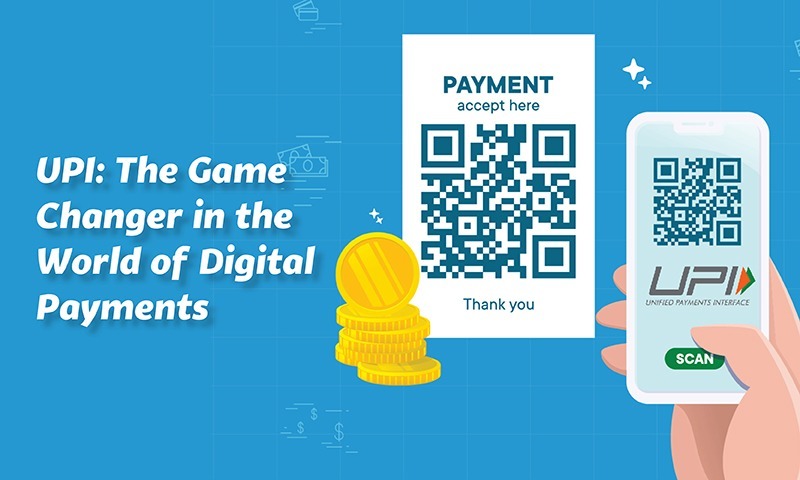In the fast-paced world of digital payments, Unified Payments Interface (UPI) has emerged as a game-changer. With its seamless and convenient transactions, UPI has revolutionized the way we handle money digitally. Whether you’re transferring funds to a friend, making a purchase online, or paying bills, UPI has become an integral part of our daily lives. In this article, we will delve into the world of UPI, its features, benefits, and its impact on the digital payment landscape.
Introduction to UPI
Unified Payments Interface, developed by the National Payments Corporation of India (NPCI), is a real-time payment system that enables instant money transfers between bank accounts using mobile devices. Launched in 2016, UPI has gained tremendous popularity due to its user-friendly interface and secure transactions. It allows users to link multiple bank accounts to a single mobile application, making it convenient and hassle-free.
How UPI Works
To use UPI, users need to download a UPI-enabled app from their respective bank or a third-party provider. Once the app is installed, users can link their bank accounts and set a UPI PIN for secure transactions. The UPI app assigns a unique virtual payment address (VPA) to each user, eliminating the need for traditional bank account details during transactions. With UPI, users can send or receive money by simply entering the recipient’s VPA or scanning a QR code.
Features and Benefits of UPI
Instant and Real-Time Payments
One of the key advantages of UPI is its ability to process transactions in real-time. Whether you’re making a payment or receiving funds, the transfer happens instantly, eliminating the waiting time associated with traditional banking methods. This real-time feature makes UPI ideal for various scenarios, such as splitting bills among friends or making quick online purchases.
Easy Integration and Accessibility
UPI can be integrated into various applications, including e-commerce platforms, utility bill payment apps, and peer-to-peer payment apps. This widespread integration makes UPI easily accessible to users across different platforms, creating a seamless payment experience. Additionally, UPI works round the clock, enabling transactions at any time, even during weekends and holidays.
Enhanced Security Measures
UPI incorporates robust security measures to protect users’ financial information and ensure secure transactions. The system uses two-factor authentication, including the UPI PIN and the mobile device’s registered SIM card, providing an additional layer of security. Moreover, UPI transactions are authorized with biometric verification, such as fingerprints or facial recognition, further enhancing the safety of digital payments.
Simplified Merchant Payments
UPI has simplified the process of merchant payments. With the introduction of UPI QR codes, customers can easily scan the code at a merchant’s store and authorize the payment through their UPI app. This eliminates the need for physical cash or card transactions, making payments more convenient and reducing the dependency on traditional payment methods.
UPI’s Impact on the Digital Payment Landscape
UPI has significantly disrupted the digital payment landscape, providing a host of benefits to individuals, businesses, and the overall economy. Its simplicity and accessibility have accelerated the adoption of digital payments, especially in a country like India, where cash transactions were prevalent. The rise of UPI has resulted in a significant decrease in cash transactions, leading to a more transparent and accountable financial ecosystem.
Moreover, UPI has promoted financial inclusion by enabling individuals from various socio-economic backgrounds to participate in digital transactions. With the availability of UPI-enabled apps in multiple regional languages, users from non-English speaking regions can easily navigate and utilize UPI for their financial needs.
The success of UPI has inspired other countries to develop similar payment systems, fostering a global shift towards digital payments. Several countries are now exploring the implementation of UPI-like platforms to enhance their financial infrastructure and drive the growth of their digital economies.
Conclusion
In conclusion, Unified Payments Interface (UPI) has revolutionized the world of digital payments with its seamless and user-friendly approach. Its instant transactions, easy integration, enhanced security, and simplified merchant payments have made UPI a preferred choice for millions of users. The impact of UPI on the digital payment landscape has been profound, leading to a significant reduction in cash transactions and promoting financial inclusion.
As UPI continues to evolve and gain more traction, it is set to further transform the way we handle money digitally. With its game-changing capabilities, UPI is undoubtedly at the forefront of the digital payment revolution, paving the way for a cashless and inclusive future.












